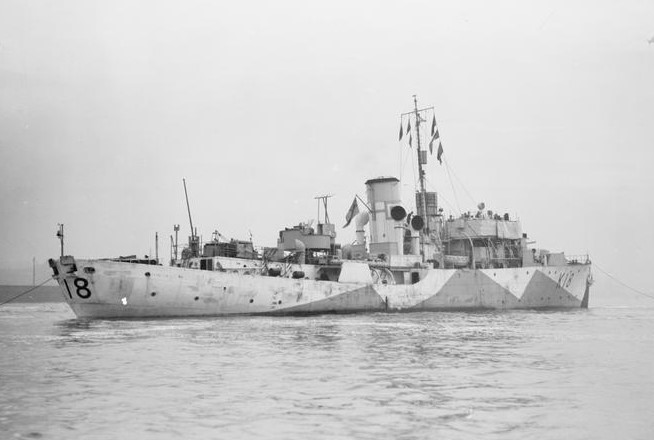-
Posts
3,014 -
Joined
-
Last visited
Content Type
Profiles
Forums
Gallery
Events
Everything posted by bruce d
-
Hello Melissa, welcome to MSW. Plenty of people here to chip in with advice/answers on the issues you will face. I am looking forward to seeing your build log, several people here have a soft spot for working boats. Your sky-gazing gear sounds serious! Bruce
-
PILLAR DRILL : A tall upright machine useful for suddenly snatching flat metal bar out of your hands so that it smacks you in the chest and flings your beer across the room, denting the freshly-painted project which you had carefully set in the corner where nothing could get to it. WIRE WHEEL : Cleans paint off bolts and then throws them somewhere under the workbench with the speed of light. Also removes fingerprints and hard-earned calluses from fingers in about the time it takes you to say, 'Oh sh*t' PLIERS : Used to round off bolt heads. Sometimes used in the creation of blood-blisters. BELT SANDER : An electric sanding tool commonly used to convert minor touch-up jobs into major refinishing jobs. HACKSAW : One of a family of cutting tools built on the Ouija board principle... It transforms human energy into a crooked, unpredictable motion, and the more you attempt to influence its course, the more dismal your future becomes. MOLE GRIPS : Generally used after pliers to completely round off bolt heads. If nothing else is available, they can also be used to transfer intense welding heat to the palm of your hand. OXYACETYLENE TORCH : Used almost entirely for setting on fire various flammable objects in your workshop. Also handy for igniting the grease inside the wheel hub out of which you want to remove a bearing race.. HYDRAULIC JACK : Used for lowering a car to the ground after you have installed your new brake shoes, trapping the jack handle firmly under the bumper. BAND SAW : A large stationary power saw primarily used by most people to cut good metal sheet into smaller pieces that more easily fit into the bin after you cut on the inside of the line instead of the outside edge. TWO-TON ENGINE HOIST : A tool for testing the maximum tensile strength of everything you forgot to disconnect. PHILLIPS SCREWDRIVER : Normally used to stab the vacuum seals under lids or for opening old-style paper-and-tin oil cans and splashing oil on your shirt; but can also be used, as the name implies, to butcher Phillips screw heads. STRAIGHT SCREWDRIVER : A tool for opening paint cans. Sometimes used to convert common slotted screws into non-removable screws and butchering your palms. PRY BAR: See Screwdriver HAMMER : Originally employed as a weapon of war, the hammer nowadays is used as a kind of divining rod to locate the most expensive parts adjacent to the object we are trying to hit. STANLEY KNIFE : Used to open and slice through the contents of parcels delivered to your front door; works particularly well on contents such as seats, vinyl records, liquids in plastic bottles and rubber or plastic parts. Especially useful for slicing work clothes, but only while in use. ADJUSTABLE SPANNER aka "Another hammer", aka "the Swedish Nut Lathe", aka "Crescent Wrench". Commonly used as one size fits all, usually results in rounding off nut heads before the use of pliers. Will randomly adjust size between bolts, resulting in injury ,swearing and multiple threats to any inanimate objects within the immediate vicinity. BASTARD TOOL : Any handy tool that you grab and throw across the garage while yelling BASTARD at the top of your voice . It is also, most often, the next tool that you will need.
-
Hello all, I have too many projects, so after some serious thought I am letting go of a few. Le Rochefort Yacht de Port - 1787. All plans (1/36) and text including the English language supplement. £50 including delivery to mainland UK. If you are anywhere else, no problem but we will have to work out the postage and packing costs. I can do some pictures if needed. I'd like to see this go to a good home with an MSW contact rather than Fleabay so let me know. EDIT: PRICE CORRECTED
-
Hello all, I have too many projects, so after some serious thought I am letting go of a few. First up: Both volumes of The Naiad Frigate by Edward Tosti, with all plans and DVDs. VGC £90 including delivery to mainland UK. If you are anywhere else, no problem but we will have to work out the postage and packing costs. I can do some pictures if needed. I'd like to see this go to a good home with an MSW contact rather than Fleabay so let me know.
-
Hello Len, A warm welcome to MSW from chilly Sussex. I look forward to seeing a build log for the tug, several people here have a soft spot for working boats. Regards, Bruce
-
This was produced by Sir George Augustus Elliot, captain of HMS Phaeton from 4 December 1849 to 25 January 1853. Phaeton was converted to a screw frigate in 1859: the attached piece is undated but was clearly written before conversion to steam. I found the section on the launching of boats and the equiping of armed boats interesting; I expect those of you who are better informed on rigging practice than me will get something from those sections as well. Watch_bill_station_bill_and_routine_for.pdf I don't think it has been posted here before, apologies if it has.
-
Found this: Digital Store C.T.85.-1.-_Sketch of a Ship-Carriage- constructed and used in Siberia ... Originally printed in the United Service Journal_extract.pdf I believe there is a model of something like it in a museum somewhere.
-
Carronades evolved. They were in production for decades and made by many different foundries on different continents. The basic design was patented but certain features changed with time. You will find variations in the sights, quoins and the muzzle. If I may suggest, pick a carronade illustration that matches the profile of the barrel in the kit and make the details match. There have been many nice models made from the Mantua kit, looking forward to seeing yours.
-
RA, welcome to MSW from Sussex 👍
-

Greetings! Reporting aboard from Florida.
bruce d replied to Luord's topic in New member Introductions
Luord, welcome to MSW from chilly southern England. There is a thread here for giving a glimpse onto the workbench without an entire blow-by-blow account: Perhaps you would like to post a photo or two of your Lightning project before plunging into a build log? -

Were can I get this clamping device
bruce d replied to Cablejim's topic in Modeling tools and Workshop Equipment
Hello Jim, welcome to MSW. I echo what Allan says. The tool-aholics here are probably all hoping to see a useful 'clamping device': I know I am ✔️ -
Alan, that really is a good looking model, a tribute to one of the escorts of convoy SC118. You probably already have it, but just in case here is the other side: The date was December 1942. HTH, Bruce
- 460 replies
-
- Finished
- Flower-class
-
(and 1 more)
Tagged with:
-
Hello John, and a warm welcome to MSW from the UK.
-

48pdr cannon
bruce d replied to Thanasis's topic in Discussion for a Ship's Deck Furniture, Guns, boats and other Fittings
Thanasis, I may be wrong but it seems there is still some confusion about the cannons in post #43. The size of the bore is a very reliable way to identify the size of a cannon/carronade. Here are some of the bore sizes of artillery pieces popular in the middle of the 19th century: - size - - bore - 6 pounder = 3.67 inches 9 pounder = 4.20 inches 12 pounder = 4.62 inches 18 pounder = 5.30 inches 24 pounder = 5.82 inches 32 pounder = 6.40 inches 42 pounder = 7 inches I did not find a figure for 48 pounder but there is a formula for calculating the bore for any size of shot. As you can see, the bore of a 48 pounder will be over 7 inches. If you know the bore of the cannons in the photo (post #43) and the drawing (post #52) you can definitely identify their size. Good luck with your research. HTH Bruce
About us
Modelshipworld - Advancing Ship Modeling through Research
SSL Secured
Your security is important for us so this Website is SSL-Secured
NRG Mailing Address
Nautical Research Guild
237 South Lincoln Street
Westmont IL, 60559-1917
Model Ship World ® and the MSW logo are Registered Trademarks, and belong to the Nautical Research Guild (United States Patent and Trademark Office: No. 6,929,264 & No. 6,929,274, registered Dec. 20, 2022)
Helpful Links
About the NRG
If you enjoy building ship models that are historically accurate as well as beautiful, then The Nautical Research Guild (NRG) is just right for you.
The Guild is a non-profit educational organization whose mission is to “Advance Ship Modeling Through Research”. We provide support to our members in their efforts to raise the quality of their model ships.
The Nautical Research Guild has published our world-renowned quarterly magazine, The Nautical Research Journal, since 1955. The pages of the Journal are full of articles by accomplished ship modelers who show you how they create those exquisite details on their models, and by maritime historians who show you the correct details to build. The Journal is available in both print and digital editions. Go to the NRG web site (www.thenrg.org) to download a complimentary digital copy of the Journal. The NRG also publishes plan sets, books and compilations of back issues of the Journal and the former Ships in Scale and Model Ship Builder magazines.




